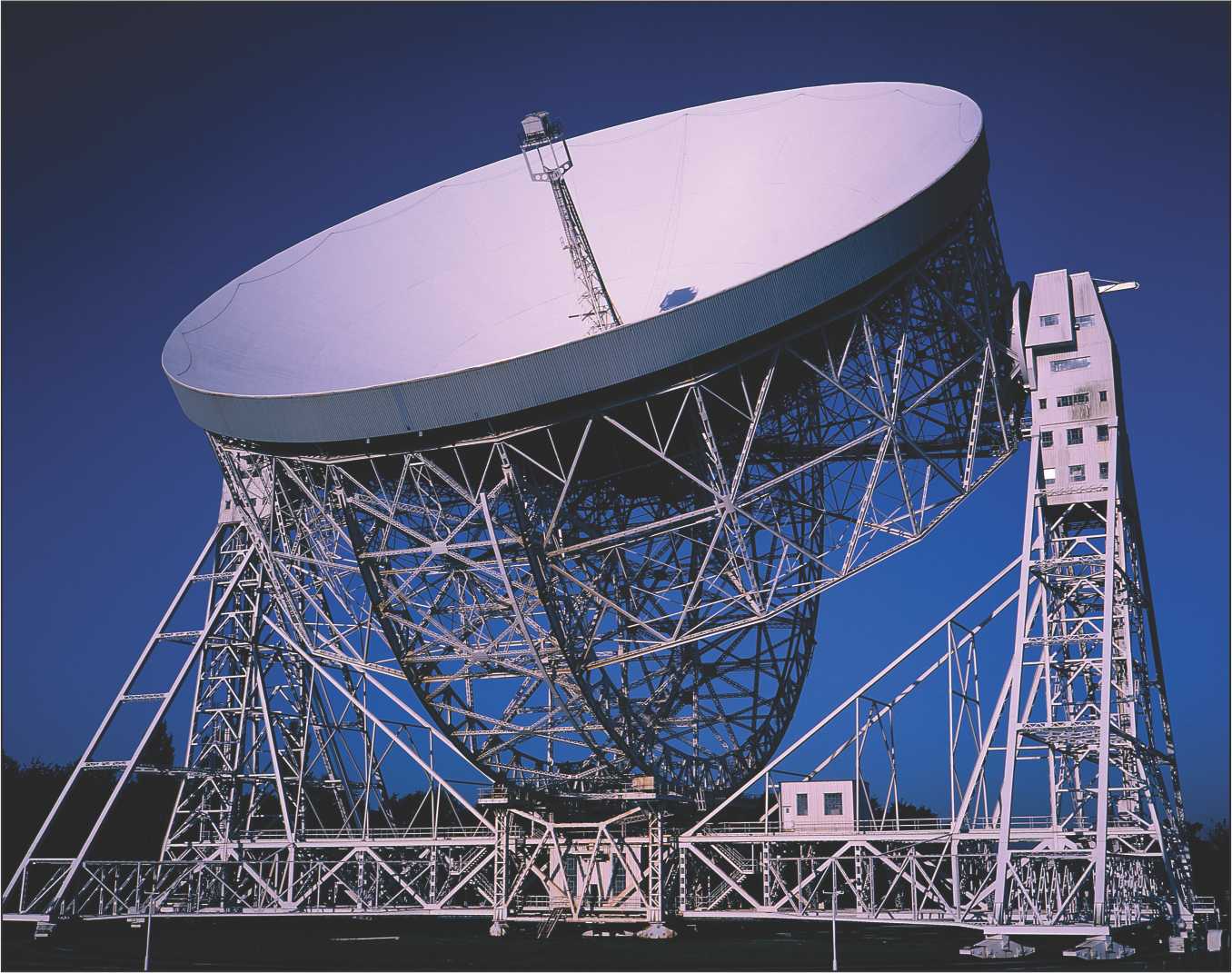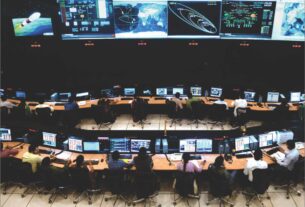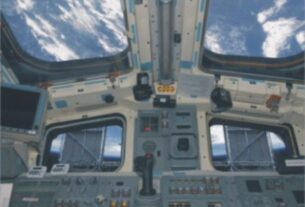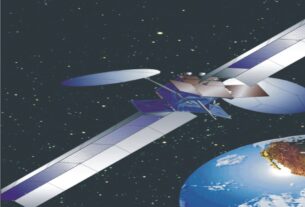In what could be described as a historic achievement of immense scientific and technological significance, India’s first ever interplanetary probe, Mars Orbiter Mission (MOM), with a lift-off mass of 1340 kg was put into an elliptical orbit around the earth by means of an augmented version of the four stage space workhorse, Polar Satellite Launch Vehicle (PSLV) designated PSLV-C25 recently.
This was for the first time that an Indian space mission is being sent out of the earth’s gravity, providing a pointer to the sophistication achieved by the Indian space program. It took 320-tonne heavy XL version of PSLV considered the most reliable space vehicle, around 44 minutes to accomplish the mission after its smooth lift-off from the first launch pad of the Satish Dhawan Space Centre (SDSC), the Indian space port in Sriharikota Island on the eastern coast of the country.
Further, this happens to be the silver jubilee flight of PSLV featuring alternate liquid and solid fuel driven stages. More importantly, it is also the longest ever Indian space flight mission. PSLV is currently the only operational launch vehicle at the disposal of the Indian Space Research Organisation (ISRO). According to sources in ISRO, the elliptical orbit achieved by the orbiter was so precise that against the predicted perigee of 250-km and an apogee of 23,500-km, it was injected into an orbit of 246.9-km and 23,566-km.
However, the long journey of the Mars probe from its current position in earth orbit to the orbit around the Red Planet is strewn with many “challenges and obstacles”.
Scientific role
Moments after the launch, a visibly delighted ISRO Chairman, K Radhakrishnan stressed the point that the primary objective of this mission was to put our spacecraft around the Martian orbit and carry out the exploration of the Red Planet with the scientific instruments on-board. Giving details about the scientific goals planned for the orbiter, he noted that “Mars orbiter has five scientific instruments, all built by ISRO. It has a colour camera for optical imaging of the planet’s surface, a methane sensor to monitor the presence of methane in Martian atmosphere, a thermal infrared camera to study the geological features, a Lyman Alpha Photometer to study the Martian atmosphere and a payload to study the neutral composition of the planet’s upper atmosphere.”
The total weight of the scientific payloads lofted by the Indian Mars mission is 15 kg. Radhakrishnan noted that “of the 33 ideas, nine instruments were designed but only five were available as they were flight-worthy instruments.” In the ultimate analysis the Indian Mars probe is expected to help generate the first ever comprehensive map of the Red Planet. ISRO sources say that autonomous features have been incorporated into the Mars spacecraft with a view to help it tackle contingencies. ISRO considers the Mars mission as a symbol of India’s assured access to space.
All said and done, this a complex and challenging mission that could very well face many hurdles on its 300 days long journey covering a distance of 400-million km to reach the orbit around Mars from where it will survey and explore the planet for about six months.
After circling the earth for 25 days, Mangalyaan, as the Indian Mars orbiter is known, would commence its journey to its final destination soon. A prolonged firing of the 440 Newton engine on-board the orbiter would push the spacecraft out of its earth orbit into Sun centric orbit. This exercise would nudge the orbiter to go around sun in such a manner as to coast along for nine months before entering into the orbit around the Mars. As envisaged now, the Indian Mars probe would reach its final destination on Sept 24, 2014 when it will be navigated to enter the Mars orbit with a perigee of 365 km and an apogee of 80,000-km.
Interestingly, it was during the 2012 Independence Day address to the nation that the Prime Minister Manmohan Singh had made an announcement of the Indian Mars mission stating that it would be a huge step forward for the country in the area of science and technology. And moments after the launch of the Indian Mars mission, in a congratulatory message President Pranab Mukherjee said. ‘This day (Nov 5) shall go down as a landmark in our space program, a day which will inspire our scientists to make even greater strides in achieving our national goals in the field of space”.
Major achievement
If Mangalyaan successfully meets all the goals set for it, ISRO will become the fourth space agency in the world to pull off the distinction of exploring Mars with a robotic probe. So far, only National Aeronautics and Space Administration (NASA) of USA, Roscosmos of Russia and European Space Agency (ESA) have been able to establish a track record of sending successful missions to the Red Planet. And in Asia, success has eluded Martian probes sent by both China and Japan. It may be recalled that a Chinese Mars probe was sent as a part of the doomed Russian Phobos Grunt mission to Mars launched in Nov 2011, thereby implying that this Asian Communist giant, which has made great strides in manned flights, is yet to pull off a successful mission to the Red Planet.
Similarly, a Japanese Martian probe launched in 1998 had come cropper on account of a mechanical hitch on-board the spacecraft. Against this backdrop, there has been a speculation that India’s Mars probe could be a well calculated strategic exercise to turn India into Asian pioneer in so far as the exploration of the Red Planet is considered. However, Radhakrishnan has denied the suggestion that India is in race with other space faring countries. Incidentally, both China and Japan are quite ahead of India in the space exploration arena.
Even so Western media reports say that India could very well pull off a veritable space coup with this interplanetary mission. For instance, The Wall Street Journal made a point that “If it succeeds, India’s Mars mission would represent technological leap for this South Asian nation, pushing it ahead of its space rivals, China and Japan, in the field of inter planetary exploration.” On the other hand, a CNN report observes that “A successful mission by India’s Mars Orbiter would make the country the first Asian nation to reach the Red Planet-and provide a symbolic coup as neighbouring China steps up its ambitions in space.”
The launch of Indian Mars probe did also provoke a debate in China. A spokesperson of China’s External Affairs Ministry rejected the suggestion that China has apprehensions about the Indian space programme. “Every country has the right to make peaceful exploration and use of outer space,” said the spokesperson. However the state controlled English language tabloid Global Times in an editorial stated that “India has an ambitious goal of leading Asia in this area, especially having an advantage over China” while endeavouring to join the elite league of countries active in exploring the Red Planet. Going ahead, it said, “As poor as India is, New Delhi managed to carry out its Mars exploration program with a budget of only $73-million, much less than the spending of China and Japan “ Apparently, India’s low cost approach to its space programme has received wide recognition.
Significantly, at Rs 4,500-million, Indian Mars mission is considered the cheapest ticket for probing Mars .As it is, India’s Mars probe not only showcases the technological prowess and scientific acumen of the country but also highlights the cost efficient, frugal engineering for which India has a reputation. ISRO attributes the low cost of Indian Mars mission to indigenization. Moreover, the Indian launch pad is not specific to a mission but flexible enough to accommodate any type of mission. Not surprisingly then the Indian space program has been described as a success story on a shoestring budget. Beyond the Mars mission, ISRO has hinted at sending probes to Venus as well as the asteroid belt.
Critical questions
As expected, India’s Mars orbiter mission has come in for criticism from a variety of quarters. For critics point out that a country like India battling the problems of poverty and backwardness should not fritter away its scarce resources on such a high profile planetary mission. There is also a view that India’s obsession with attaining super power status has nudged the country to go in for such a “costly space mission” On his part, Radhakrishnan defends the Mars mission saying that it “is a historical necessity, since after having helped find water on the moon, looking for signatures of life on Mars is natural progression.” ISRO considers Mars mission as the logical and natural extension of the Chandrayaan-1 mission launched in 2008.
Mars mission has also come in for flakes from G Madhavan Nair, a former ISRO chief. He says, “With a miniscule methane sensor even if you want to look at methane, it cannot be done. National Aeronautics and Space Administration (NASA) has come out publicly after a rover experiment that there is no trace of life on Mars. In spite of that somebody making this kind of statement-they are fooling the nation.” On the other hand, Indian born NASA scientist Amitabh Ghosh says that the priority of ISRO should have been the three stage Geosynchronous Satellite Launch Vehicle (GSLV).
It was originally planned to launch the Indian Mars orbiter on-board the cryogenic fuel driven GSLV with a lift off weight of more than 400-tonne. However, with ISRO still struggling it out to flight qualify GSLV following the flaws in its upper indigenous cryogenic engine stage it was decided to go in for PSLV as a vehicle of choice for Mars Orbiter mission. The result is that the scope of the Mars orbiter mission was scaled down. It is surmised that with GSLV as a launch vehicle ISRO could have launched a heavier payload with more number of scientific instruments.
The last flight of the ill fated GSLV planned for August was called off at the last moment following the detection of a leak in the second stage of the vehicle. Now ISRO has said that the next flight of the GSLV will take place in December this year. The strategic significance of GSLV lies in the fact that it would provide India the capability to launch two tonne plus class spacecraft which are currently hoisted into space at the head of the procured launch service at an enormous cost to the public exchequer.
The successful operationalization of the GSLV is also critical for India’s second mission to moon, Chandrayaan-II set for launch during 2015-16 time-frame. For Chandrayaan-II is slated to go into space at the head of GSLV. Similarly, a high performance version of GSLV is expected to be deployed for launching India’s manned mission which is yet to be approved by the ruling elite in New Delhi. For India cannot afford to sustain its space activities for long with a solitary launch vehicle.
Meanwhile, Dr K Kasturirangan, a former ISRO chief has stated that the successful accomplishment of this mission not only marks a major milestone for the Indian space but also provides India with a springboard for future international deep space missions not only to Mars but to other planets of the solar system.
He also projected the view that this planetary mission has implications for improved science, technology and risk management involved in long distance planetary missions.
On the other hand Prof U Rao, also a former ISRO head, who was the Chairman of the committee that selected the payloads incorporated in the Mars mission, expressed the view that “We may have something to say about the presence of methane and where it comes from. That may give us some indication of any form of life at all on the planet”. On another plane, Rao stresses the point that Mars holds great potential and relevance to earthlings because in about 500 years from now, we might be able to use Mars as resources base for earth.
Former Indian President and internationally recognised space scientist Dr APJ Abdul Kalam has made an impassioned plea for a well organised international collaboration to give a practical shape to the human dream of colonizing Mars. It is widely perceived that Mars could be the next outpost of human civilization in our solar system. But then the grim ground reality is that man is still many years away from sending a human expedition to the Red Planet. Incidentally, unmanned missions to Mars have been attempted more than 50 times since Russia launched a probe to Mars in 1960. However; only 50% of Mars probes have been successful.
Mission objective
ISRO is clear that the primary technological objective of its Mars mission is to design and realize a spacecraft which can reach Martian transfer trajectory, orbit around Mars and map minerals while looking for signs of methane. On a more practical plane, the successful implementation of the Mars mission would provide ISRO hands down experience in areas such as deep space communications, navigation, mission planning and management. There is also a view that Mars orbiter mission is the logical extension of India’s first ever mission to the moon Chandrayaan-1. But then in contrast to Chandrayaan-1, mission to the Red Planet involves a longer flight and an altogether different trajectory.
According to M.Annadurai who is currently programme Director for Indian Remote Sensing, Small, Science and Student Satellites at ISRO Satellite Centre in Bangalore, “It provides us with opportunity to test technologies like spacecraft autonomy, long distance space communications, interplanetary navigation and miniaturized space payloads and systems.”Annadurai was the leader of the team that was behind the successful realization of the Chandryaan-1 mission.
The overwhelming view of the Indian scientific community is that Indian Mars probe will be in a position to look at Mars in a totally different perspective and come out with new findings. As it is, data provided by the American Curiosity rover has not been able to establish the presence of methane on Mars. Significantly, NASA is planning to launch its orbiter mission to Mars called MAVEN (Mars Atmosphere and Volatile Evolution Mission). It is expected to share synergy with India’s Mars mission. For, the sensors of both these missions will probe and analyse the dynamics of the process that was responsible for the thinning of the Martian atmosphere. “There are some overlapping objectives and at the point we are both in-orbit collecting data, we plan to work together with the data,” says Radhakrishnan.
Interestingly about a decade back, planetary researchers began to report finding methane in Mars atmosphere using data from both ground based instruments and space based mission. However, as is the case with earth, methane can also be generated by geochemical processes in which hot rocks interact with water and carbon dioxide. However, many scientists are sceptical about the existence of methane on the Red Planet.
Indeed, if the Indian Mars probe provides solid evidence for the presence of methane in Mars, it would be a win-win development for the Indian space program. Presence of methane could be an indicator of the primitive life forms having existed on Mars during the course of its evolution.
There is as yet is no clarity on the existence of methane on the Red Planet. Monitoring the presence of methane has been the mainstay of the scientific payloads on most of the probes sent to the Red Planet. By all means the task before the Indian Mars probe seems both exciting and challenging.





